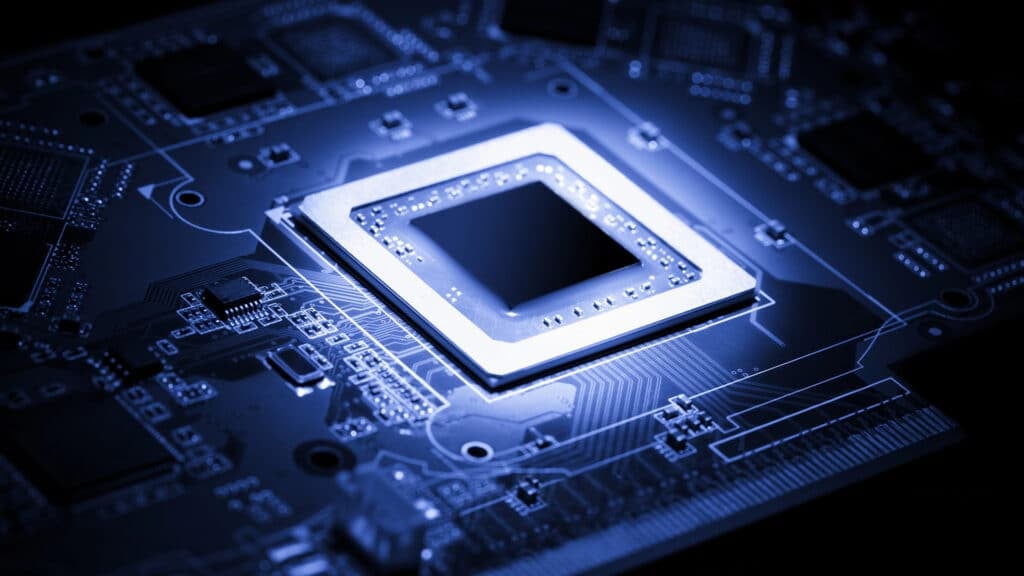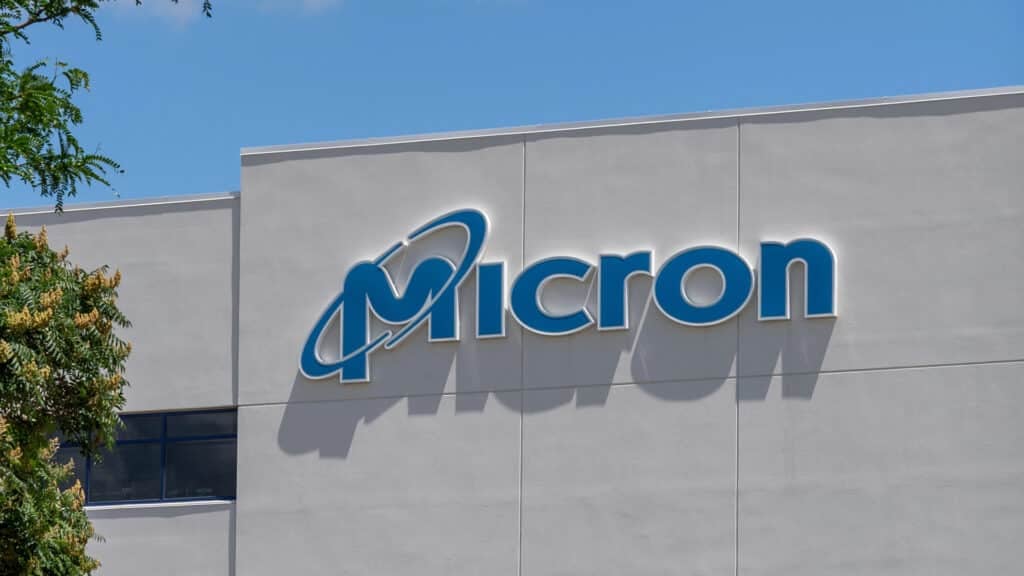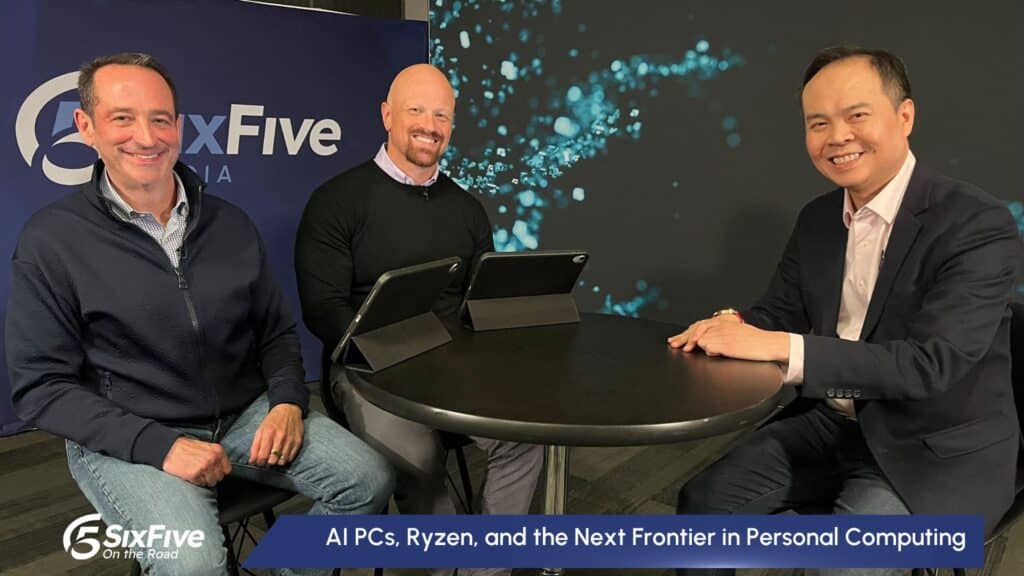Can AI be leveraged for wildlife conservation? 🦓🐘
Host Keith Townsend is joined by Solidigm’s Avi Shetty and PEAK:AIO’s Roger Cummings for a fascinating conversation on the convergence of cutting-edge technology and wildlife conservation efforts. Tune into this episode of the Six Five On The Road at SC24 to learn about ⤵️
- The innovative data management approach developed for wildlife studies by ZSL and PEAK:AIO, leveraging high-density Solidigm storage and AI
- The role of Solidigm’s D5-P5336 61.44 TB QLC drives in powering rapid data storage and analysis for conservation efforts
- Challenges of scalability in AI development due to infrastructure limitations in performance and power efficiency
- How Solidigm’s high-density storage solutions meet the intense demands of data processing for global conservation projects
- Solidigm’s latest 122TB SSD announcement and its significance in overcoming storage and performance challenges
Learn more at Solidigm.
Watch the video below, and be sure to subscribe to our YouTube channel, so you never miss an episode.
Or listen to the audio here:
Disclaimer: Six Five On The Road is for information and entertainment purposes only. Over the course of this webcast, we may talk about companies that are publicly traded and we may even reference that fact and their equity share price, but please do not take anything that we say as a recommendation about what you should do with your investment dollars. We are not investment advisors, and we ask that you do not treat us as such.
Transcript:
Keith Townsend: All right. Welcome back to coverage of SuperCompute 2024. We’re backed by the power of Dell’s AI Factory. Literally behind us is the Dell AI Factory. We’ll get into that in a little bit. This show has been amazing. There’s people out here trying to cure diseases, solve global warming challenges, and we’re talking to the infrastructure players helping that happen. I’m joined by the CEO of PEAK:AIO. Mr. Cummings, thank you for joining us.
Roger Cummings: Thanks for having us.
Keith Townsend: And then returning as a guest, Avi from Solidigm. Welcome back.
Avi Shetty: Thank you, Keith. Great to be here.
Keith Townsend: You bring another hard drive for me to show and tell?
Avi Shetty: No hard drive. SSDs.
Keith Townsend: Good correction. You can tell I’m a geek, but we’re going to up level the conversation by starting out the conversation with you, Roger. Talk to me about the Dell AI Factory and its importance of solving these critical world challenges.
Roger Cummings: Absolutely, and I think it’s interesting. In my career, I’ve been in infrastructure my whole entire career, but now infrastructure is closer to solutions. And what I mean by that is between the Dell and the Solidigm relationships, we’re solving cancer, as you mentioned earlier, solving cancer, saving hedgehogs, right? Certain innovations are closer to the edge, and Dell and Solidigm help us and allow us to get closer to that edge. So we’re very excited, and infrastructure is sexy again, and we’re able to really determine cancer or define cancer earlier and a patient’s involvement. So it’s a really, really exciting time.
Keith Townsend: Yeah, early detection is so important. My family members have benefited from these technologies.
Roger Cummings: Absolutely.
Keith Townsend: And I am so appreciative of the work that companies like Dell and several of the university partners who are on the show floor do. Now tell me about PEAK:AIO. What’s the relationship between Dell and PEAK:AIO?
Roger Cummings: So PEAK:AIO is a software-defined storage layer. So we can sit on various software platforms, and we turn those commodity hardware platforms into high-performance storage and data devices for AI and HPC workloads. So we have an incredible relationship with Dell as well as Solidigm, providing the density that we need, the high capacity that we need to push that AI to the edge. So you could do more of running the models and training the AI models right at the edge and get the inference to make decisions at the edge too.
Keith Townsend: So Avi, talk to me about kind of speeds and feeds a little bit. Connect the dot all the way from the low level, all the up to this higher level business value. What is PEAK:AIO and Solidigm tested that works fundamentally well? What would be a typical configuration?
Avi Shetty: So when it comes to AI, it all, like there are four things, right, which we at Solidigm along with our customers believe in. You need low latency, you need high bandwidth, you need high density, and you need cost affordability. Right. And affordability has a bunch of parameters when you look at power constraints, you look at real estate space, you look at the overall TCO of your solution. And what we’ve been able to partner and bring to one of our customers collectively is in a power-limited space, have all the compute and density needs, which our customer wanted.
You’re talking about the Zoological Society of London, which wanted to capture images for conservational needs, and the need for images just doesn’t stop. You’re talking millions of millions of images, and they needed real-time processing. So what our partners PEAK:AIO and Dell did was provide compute to DGX NVIDIA servers with PEAK:AIO software on top as a traction layer, and they needed a density, which was three petabytes. So three petabytes in on-prem within the zoo. You just can’t do that with hard drives and come Solidigm with our high-density SSD solutions, we help solve that problem.
Roger Cummings: Yeah. And I’ll bring up two other things too. You have to remember, in the AI world, our customers are computational biologists, or in this example is a professor in biology. They don’t really want complexity, so they want simplicity. And to your point on density with infrastructure, and you can’t afford to put infrastructure in this case, outside an exhibit for an animal.
Keith Townsend: Right.
Roger Cummings: They actually had to move the water deer to a new facility because the cooler behind the building was actually frightening the deer. So it’s a great example and a great testimony for both Dell, Solidigm, and PEAK:AIO of how our infrastructure is simplified, right, to provide incredible value at the edge.
Keith Townsend: So talk to me about the reduction of complexity, not from the technology perspective, but from the business relationship perspective. Because these data scientists and scientists, they just want to solve their problems.
Roger Cummings: Exactly right.
Keith Townsend: They don’t want to design systems.
Roger Cummings: Exactly right. So our solution along with support from Dell and Solidigm is very simple to maintain. When you buy a GPU, you’re making a tremendous amount of investment, but then you find out that I have to have the supporting infrastructure, storage infrastructure to feed that very high performance system. So a lot of times you look at the industry and there’s a lot of complexity that comes with that. Our product is very simple. What I mean by simple, it’s you set it, it collects the information, it stores it for you. It is a high performance, you don’t have to touch it. Our goal in building PEAK:AIO, starting from scratch around AI. We’re not at the enterprise storage layer where you have a lot of features and functions. We’re central around AI and the simplicity around AI, as Avi mentioned, it’s performance, power, and density. We try to make those things very simple for the user to use.
Keith Townsend: So you’re talking to other CEOs, peers who have initiatives, the AI supports, but I think it’s the harming and imbalance when it comes to ESG goals such as carbon footprint reduction, et cetera. Talk to me about how you’re helping to support that mission while at the same time helping to have the other business outcomes.
Roger Cummings: Yeah, absolutely. And I think the Solidigm technology is key there because the QLC capabilities allows organizations to run things at a much more power efficient manner. Right. So it’s all about the square foot of savings that you’re giving these organizations. They only have so much space in their infrastructure. So our part is to make that very high performance on a very low footprint. I’ll turn it over to Avi to talk about the Solidigm value that they bring from the density perspective too.
Avi Shetty: Yep. So fundamentally, Keith, right, when you look at AI, AI requires a lot and a lot of data. And guess what? Data requires efficient infrastructure. And for infrastructure to be efficient, you have to have a paradigm of solutions, which are not only solving your bandwidth and performance needs, but also making it sustainable as you’ve actually called out on the power side. So the incumbent solution, which without a PEAK:AIO or Dell or Solidigm SSDs, would have been a system with hard drives in it, which would’ve consumed 30% of the overall power, which wouldn’t have allowed our customers ESL to invest in GPUs. GPU is the primary investment. You need to keep GPUs fed all the time with data, which requires bandwidth and density, and with Solidigm SSDs offering 80% lower power compared to hard drives, it helps solve the power issues which our customers face.
Roger Cummings: Yeah.
Keith Townsend: Yeah. So there’s this debate, which I don’t think there is a debate anymore because you folks are helping solve the problem. Should I bring my data to the AI or the AI to the data? Talk to me about the transformative nature of being able to simply bring the NVIDIA GPUs, the Dell Factory to my data and business processes.
Roger Cummings: Well, I think from our perspective, it’s as they bring, wherever they bring, whatever they conceive as the edge, because the edge is changing quite a bit as well. The definition of edge computing or edge, what an edge device really is. We are flexible. We can run, we’re a very small footprint as far as wherever they reside. So we’re empowering that. When it comes to Solidigm, I’ll let Avi talk about their role, but really wherever they want that edge, we can exist there.
Avi Shetty: Yeah. For us, we see the whole AI evolution as two things. Right. It’s either scaling up.
Roger Cummings: Yeah.
Avi Shetty: Or scaling out, and whether it’s the data center which requires efficient high-density storage or at the edge, we’re helping solve those with different form factors. Right. At the edge, you need much more smaller form factors, efficient power. While at the data center, you just need raw bandwidth. So we have a full portfolio of SSD solutions depending on where the data center’s located.
Roger Cummings: You bring up a great point though. With the density that’s happening today, it’s amazing. You’re finding 122 terabyte drives. Think about the form factors that can fit into many servers now with the 56 or 64 drives in it. You’re talking about four to six petabytes sitting in within a 2U frame. Right. So you’re going to address a tremendous amount of the workloads within the AI space.
Keith Townsend: Yeah. So I’m thinking automatically going to entertainment, being able to create and capture more content at the edge, do that AI video processing at the edge, that’s one use case. But let’s focus on this medical use case and the ability to do genomics and scans at the edge. Avi, give us a sense of scale. What are some of the things you’re seeing done at the edge from a medical?
Avi Shetty: It’s all about efficiency, right? Yes, we talk about AI, but unless there is a use case, which in this example, the medical community encountered where they were trying to process real time images and they’re doing medical scans, and their current time to process images was roughly 30 odd minutes. And having an NVIDIA DGX server, PEAK:AIO software along with Dell’s infrastructure, with Solidigm SSDs, they could do that now in 30 seconds, right? You’re talking real time perceivable benefits, which the medical industry could take advantage of. And by the way, when you’re talking medical, it needs to be secure and reliable, and which this whole platform together provides as well.
Keith Townsend: So Roger, I’m going to wrap this up by the tough question. The industry is exceptionally competitive from a component’s perspective all the way up to the Dell AI Factory. Dell has plenty of competitors. What’s special about the Solidigm relationship with PEAK:AIO?
Roger Cummings: Really, if you boil it down, it’s the ability for us to do more at the edge, right, the density that they provide. It’s a great example, the medical example. We’re able to sit on that edge, as I mentioned before, capture those MRI images, run the model against that image, determine if there’s an issue, then run the inference on that issue. That solution, especially with medical, as you mentioned, it’s secure. Can’t bring the patient information back to that model. So you can bring the inference of that information back.
Keith Townsend: You can bring your AI to your data.
Roger Cummings: Exactly right. And Solidigm really allows us to do that with the density that it has to offer.
Keith Townsend: So you’ve heard just a couple of use cases here from the show floor. We have the Dell AI Factory in the backdrop. We’re talking about energy use cases. We’re talking more medical use cases, entertainment, deep research around the human brain and how the human brain works and influences the AI neural networks. So much to learn here at SuperCompute 2024, and we’re covering as much as we can, Six Five On The Road. Stay tuned for more deep content. I’m your host, Keith Townsend. And for our guests, Avi and Roger, thank you for following our coverage.
Author Information
Keith Townsend is a technology management consultant with more than 20 years of related experience in designing, implementing, and managing data center technologies. His areas of expertise include virtualization, networking, and storage solutions for Fortune 500 organizations. He holds a BA in computing and an MS in information technology from DePaul University.










